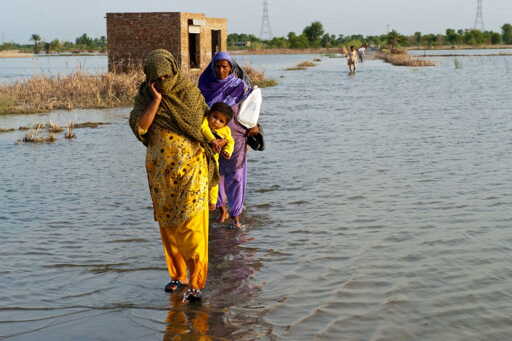On the morning of Aug. 15, a cloudburst that poured more than 150 millimeters (6 inches) of rain in one hour triggered a flash flood in the city of Buner, located in Pakistan’s northwestern province of Khyber-Pakhtunkhwa. More than 300 people died after the torrents of boulders and mud washed away homes, hotels, restaurants and other infrastructure. “The flash flood came from the mountains. In my whole life living in Buner, I never saw any disaster like that. It was horrific,” Tariq Zaman, a resident, told Mongabay by phone. “My friend who was with me that day saw his house submerged under water. He lost 18 members of his family on a single day.” Torrential rain created havoc in other parts of the northern areas beyond Buner as well, as water flowed from the mountains to the downstream areas, destroying localities and neighborhoods. Climate change is impacting communities worldwide, but researchers say Pakistan is affected by two phenomena: a “compound” climate change effect, a term used by climate scientists to describe multiple climate hazards — such as drought, heat waves, torrential rains and wildfires — that occur simultaneously or in close succession; and also what’s called the “sequential” climate change phenomenon, in which a chain reaction can occur where one climate-related hazard triggers or intensifies a series of subsequent events. Villager Mateen Khan, second left, and his family members sit over the rubble of their damaged home following flooding in Buner district, Pakistan, in August. Image by AP Photo/Muhammad Sajjad.…This article was originally published on Mongabay
From Conservation news via this RSS feed


